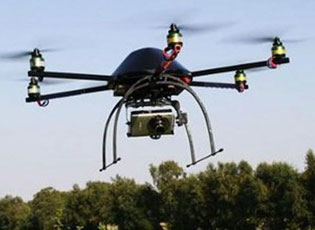- 2021
- December (1)
- March (87)
- February (60)
- January (35)
- 2020
- December (109)
- November (111)
- October (109)
- September (114)
- August (22)
- July (129)
- June (116)
- May (93)
- April (106)
- March (114)
- February (53)
- January (31)
- 2019
- December (37)
- November (72)
- October (52)
- September (43)
- August (65)
- July (55)
- June (14)
- May (55)
- April (72)
- March (28)
- February (1)
- January (12)
- 2018
- December (49)
- November (45)
- October (44)
- September (31)
- August (61)
- July (46)
- June (48)
- May (33)
- April (61)
- March (53)
- February (45)
- January (50)
- 2017
- December (46)
- November (56)
- October (60)
- September (20)
- August (56)
- July (61)
- June (58)
- May (28)
- April (44)
- March (57)
- February (54)
- January (42)
- 2016
- December (55)
- November (70)
- October (73)
- September (24)
- August (50)
- July (47)
- June (61)
- May (19)
- April (48)
- March (47)
- February (33)
- January (45)
- 2015
- December (43)
- November (39)
- October (53)
- September (55)
- August (19)
- July (47)
- June (28)
- May (26)
- April (54)
- March (55)
- February (29)
- January (30)
- 2014
- December (26)
- November (48)
- October (44)
- September (30)
- August (28)
- July (30)
- June (23)
- May (53)
- April (30)
- March (25)
- February (31)
- January (16)
- 2013
- December (23)
- November (29)
- October (34)
- September (12)
- August (15)
- July (23)
- June (12)
- May (24)
- April (12)
- March (14)
- February (22)
- January (15)
- 2012
- December (16)
- November (30)
- October (28)
- September (4)
- August (14)
- July (15)
- June (3)
- May (5)
- April (7)
- March (14)
- February (8)
- January (9)
- 2011
- December (8)
- November (17)
- October (17)
- September (16)
- August (11)
- July (14)
- June (8)
- May (16)
- April (12)
- March (20)
- February (11)
- January (7)
- 2010
- December (3)
- November (8)
- October (18)
- September (19)
- August (12)
- July (16)
- June (21)
- May (15)
- April (12)
- March (15)
- February (22)
- January (11)
- 2009
- December (13)
- November (16)
- October (10)
- September (12)
- August (5)
- July (15)
- June (15)
- May (9)
- April (15)
- March (6)
- February (14)
- January (6)
- 2008
- December (9)
- November (5)
- October (2)
- September (2)
- August (1)
- July (1)
- June (1)
- April (4)
- February (1)
- January (3)
- 2007
- December (1)
- November (2)
- October (6)
WITHOUT DRONES OVER SOUTH SERBIA

Presevo, Bujanovac, Medvedja – Until the latest NATO’s decision, the KFOR’s air forces, which are stationed in Kosovo and Metohija, had control over the air space in the Ground Safety Zone as of 2001.
The point at issue is control of the airspace from the border with Macedonia, through the municipalities of Bujanovac, Presevo, Medvedja, Vranje, Leskovac, Kursumlija, Brus, Raska, Novi Pazar and Tutin to Rozaje on the border with Albania.
The above-mentioned space was regularly patrolled by drones, and very often, when inter-ethnic incidents between the government’s security forces and members of the radical Liberation Army of Presevo, Bujanovac and Medvedja (LAPBM) occurred, such as those in 2001, by KFOR helicopters and planes responsible for gathering intelligence from the air, which are known as AWACS.
Under the most recent decision of NATO, Serbia regained the territorial integrity of part of its airspace.
This means that in order for this part of airspace to be used by military and police aircraft, the Belgrade authorities won’t have to get prior approval from the KFOR, which has been the case so far.
Such a decision also implies the carrying out of normal patrols by the Serbian police and military aviation when monitoring the areas close to the border with Macedonia, the administrative line with Kosovo and Metohija, as well as the border with Montenegro and Albania.
In this way, the government’s security forces seized control of the most neuralgic point on the administrative line with Kosovo and Metohija, the one in the area stretching from Bujanovac, Presevo and Medvedja to Raska and Novi Pazar, creating a space for constant monitoring of the situation from the air in the wider region, which was within the exclusive jurisdiction of the KFOR for fifteen years.
This was preceded by multi-annual permanent meetings, held primarily between representatives of the Serbian Army and KFOR heads, which were usually held in the area of Bujanovac, Presevo and Vranje.
In this way, a wider space was opened for the exchange of security and operational data related to possible terrorist challenges posed by extremist groups from Macedonia, Kosovo and Metohija and Albania, thereby enhancing a safety ring in the region of this part of the Western Balkans.
Under the Kumanovo Military Technical Agreement (of June 1999), by which the NATO bombing of Serbia ended, the Ground Security Zone (GSZ) was formed, which was 402 kilometers long and which spread five kilometers in depth of the territory of Serbia. The Ground Security Zone was formed as a “buffer zone” on the ground and in the air for fear of the international community of the possible actions of the Serbian army and police in Kosovo and Metohija. The jurisdiction over the ground part of the GSZ was transferred to the Serbian army and police in June 2001 under the supervision of KFOR military representatives.
Source: B92, “Danas” daily and Coordination Body